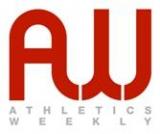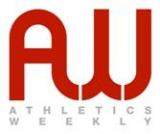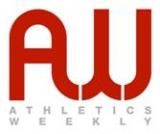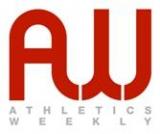Folders |
The age group debatePublished by
Age group changes are included in proposals for the 2016 UKA rule book and Mike Dooling has his sayProposals for the 2016 UK Athletics (UKA) rule book were published in March, with the modification of age group categories to bring them in line with International Association of Athletics Federations (IAAF) rules among them. The consultation period for those age group change proposals ends tomorrow (May 29) and Liverpool Harriers club president Mike Dooling has shared his thoughts. As someone who has been in the sport since the age of 11, been a member of Liverpool Harriers for more than fifty years and is totally immersed in the sport, I care passionately about athletics and am deeply troubled about the current age group debate and the impact this could have on the sport, as well as the number of people expressing very vehement views on the matter. I feel that UKA are using a sledgehammer to crack a nut by suggesting that all age groups should change for the sake of the small number of athletes involved in these age groups. Based on all the meetings I have attended in my many roles and all the conversations I have had with colleagues within the sport, I have no doubt that at least 95% of people involved in grass roots athletics are opposed to this idea. As someone who has taught for more than forty years and is still very involved in school athletics at all levels, I can see no sense in disrupting the whole of the education system for the sake of these age groups. While the school year runs from September to July, the English Schools Athletic Association (ESAA) will continue to operate on their current format, even if the age groups are altered at club level. This could leave individuals operating in two different formats, which would not be good for the sport. If, sometime in the future, the education system changed to January to December then I am sure that ESAA would reconsider its age groups. Any attempt to force through changes would leave the sport in disarray. The new proposals would leave the current under-13 age group without any competitions and, with 120-plus year five and six youngsters within my club to cater for, it would leave us in a hell of a mess. We currently channel them into the under-13 age group competitions, encourage those who are interested to attend local open meetings and work on school awards for the rest. If this current age group were thrown out of the system, how do you expect very busy club people to also cater for these athletes? Some possible actions:1. Why not create a Euro junior age group? I have called it E18 for under-18s and E20 for under-20s. Because these are high-level athletes, they can cope with higher competitions thus E18s compete at the under-20 level and E20s compete at under-23 or senior level depending on the competition. 2. I suggest that over the next six months UKA work on an active website to give athletes and coaches clear guidelines about the exact age groups. At the present time there appears to be some confusion as to the exact dates which athletes can move into this age group and we are only talking about high-level athletes who are capable of reaching the standards set by UKA. There is also much confusion about implements, weights, hurdle specifications, etc. This could also be clearly laid out on the site. Coaches would be given the opportunity to nominate athletes who are capable of reaching the standards which are set out on this website as well as a list of competitions and approximate selection dates. UKA interacts with athletes and coaches by clearly setting out a list of athletes in each event who are being considered for this age group, based on their recent performances. 3. On this website, athletes, once registered, would be given a distinctive number. In the ESAA Track & Field Cup competition each competing school prints off their own set of numbers. This saves on expense and ensures that schools have suitable numbers. 4. Euro juniors COULD compete in the following events as long as all the partners are contacted and are involved in the negotiations and still count for the clubs as under-17s and under-20s currently do. A. Area, BAL and UKWL leagues. In most events there would not be any distinction 100m and 200m events would not be considered for performances without a wind gauge. UKA create a pro forma which athletes and coaches print off and they become used to having these certified at events by the referee or meeting manager and enter this information on the website with the performance. In hurdle events it would not be feasible to use the E heights, as all athletes need to be on a level playing field. In all throws all E18s or E20s would have to use the normal implements. In the jumps also, there would need to be a wind gauge in the long and triple but high jump and pole vault could operate as normal. B. County championships. E18s could compete against the under-20 age groups and E20s could compete against the under-23 and senior age groups. Again the same stipulation would apply regarding hurdles and implement weights. We do not currently use photo finishes at our championships but it could be that we ask our neighbouring counties who already hold joint championships to hold regional E events for these age group, which could help these athletes gain a better level of competition backed up by electronic times. C. Selective events around the country such as BMC meetings, Loughborough, televised meetings etc. Most events could be catered for as normal but there could be selective E events for sprints, hurdles, as and when required. D. Area and national championships. E18s compete in the under-20 age group and E20s in the under-23 or senior age groups, depending on the competition. Most events would not require any additional change and could operate as normal. Those events where specifications, hurdle heights, etc, are different could be catered for at these events at both regional and national level. 5. My idea for having specific distinctive numbers for these athletes which they could wear in every conceivable competition is that in each area people gain knowledge of who these athletes are, what their competition needs are and over time we could build up better opportunities for them to prepare for and compete on the international stage. This is in everyone s interest and hopefully this would allow us to nurture these individuals through the various stages leading up to senior level. As athletes move through and out of the E age groups or they fail to meet the standards in one particular year they are removed from the group and website and the numbers are registered void and could be recycled in future years by the UKA group who manages this. I had the numbering idea from the England cricket team where every player has their own distinctive number. 6. If the website was an interactive site, athletes and coaches would be given their own password and they enter all the appropriate details of performances. There could be a Power of 10 ranking list for each E age group which assists selectors and gives athletes and coaches and anyone else who is interested an update on who is in the driving seat in that event and what standards athletes have to achieve to be in contention. Hopefully, if some of these ideas were taken on board, our current crop of talented youngsters would be guided through the age groups by the current UKA youth management team, who have a very good understanding and knowledge of the needs of this group. The post The age group debate appeared first on Athletics Weekly. Read the full article at: www.athleticsweekly.com
More news |







